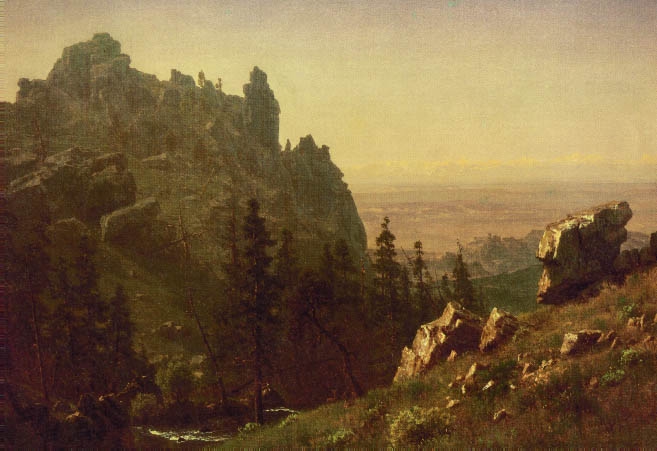
Wind River County, A. Bierstadt

Dubois, Wyo., 1940's
Click here for close-up
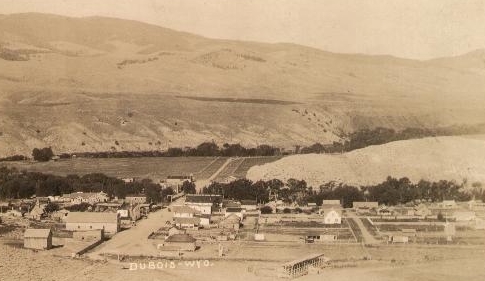
Dubois, 1920
Dubois was first settled in the 1870's and was known as "Never Sweat." However, when it came time for the establishment of a post office, officials in Washington determined that it should be named for Idaho United States Senator Fred Thomas Dubois (1851-1930), a member of the Postal Committee, and today remembered primarily for his strong anti-LDS beliefs and being chairman of the committee of the Senate that required navy bean soup to be always on the Senate menu.
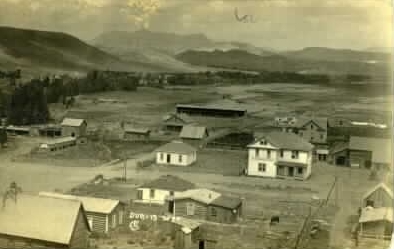
The Stringers were among the early settlers of Dubois. Other early residents of the Dubois area included Butch Cassidy who operated a horse ranch. It has been alleged that he always seemed to be able to sell more horses than he could raise. When President Arthur came through the Dubois area, he and his entourage started to camp on land belonging to a local named Clark. When Clark was told that it was the President of the United States, supposedly Clark replied: "I don't care what he is president of; he is on my land without permission." The President and his party moved.
As noted with regard to the discussion of Lander several of the early mountain man rendevous were conducted in the area. Some question exists as to the exact location of several of the rendevous. Although Hiram Chittenden, discussed with regard to Yellowstone, contended that the rendevous of 1830 was conducted near South Pass or Lander, some evidence exists that it was held at the head of the Wind River near Dubois. Additionally there is evidence that Andrew Henry and William Ashley's company had its winter camp in the area in 1823-24 as did Jedediah Smith in 1829.
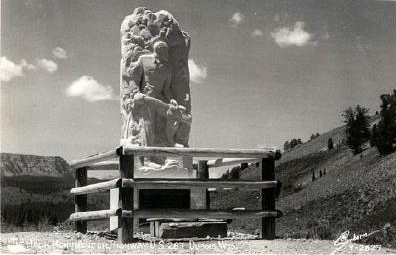
In 1914 the Wyoming Tie & Timber Company began cutting railroad ties in the Togwotee Pass. Ties were also cut in Union Pass where the remains of some of the old log flumes may still be seen. The ties would be floated down the Wind River to Riverton for use on the Chicago and Northwestern. Tie Hacking in Wyoming, however, dates back to the coming of the Union Pacific in 1868 when tie hack camps sprang up in the Medicine Bow Mountains to serve the Railroad. At the turn of the century tie hack camps were located in the Big Horn and Wind River Mountains. The railroad took 2,500 ties per mile of track. Until the 1940's the Dubois area was the leading source of railroad ties in the United States. The need was tremendous considering the lack of trees all across Iowa and Nebraska. Indeed, even today one hears the standard joke about the Nebraska state tree, the telephone pole. Actually it is the Cottonwood. In the beginning the ties were all cut by hand using a broad axe, by individuals who would necessarily be brawny, leading to the term for the axemen--"tie hacks."
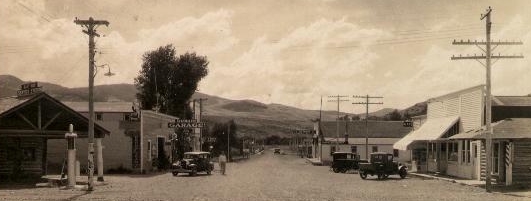
Dubois, 1933

